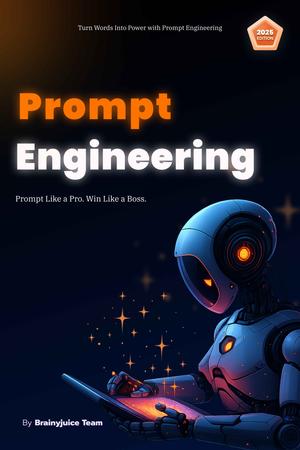
Step-by-step guide to becoming a full stack developer in 2025, tailored for serious developers who want real results, not vague motivation.
STAGE 0: Understand the Role of a Full Stack Developer
A full stack dev can:
-
Build interactive, responsive frontends
-
Handle backend logic, data processing, and APIs
-
Work with databases to persist and retrieve data
-
Understand dev tools (Git, CI/CD, deployment)
-
Handle basic system design and scalability
STAGE 1: Master the Prerequisites (2–3 Months)
HTML (Structure)
-
Tags:
<div>,<span>,<section>,<header>,<footer>,<form>,<input>, etc. -
Semantic HTML
-
Accessibility (ARIA roles, alt text, labels)
CSS (Design)
-
Box model, selectors, specificity
-
Flexbox and CSS Grid
-
Responsive design (media queries, rem/em, mobile-first)
-
Pseudo-classes (
:hover,:nth-child) -
Utility-first frameworks: Tailwind CSS
JavaScript (Logic)
-
Variables, data types, operators
-
Loops, conditionals
-
Functions (normal, arrow, higher-order)
-
Objects & Arrays (manipulations)
-
DOM manipulation (
querySelector,addEventListener) -
ES6+:
let/const, destructuring, spread/rest, template literals -
Async JS: Promises,
async/await, Fetch API -
Error handling (
try/catch,finally)
STAGE 2: Frontend Framework (2 Months)
Learn React (Most In-Demand)
-
Components (function vs class)
-
Props and State
-
Lifecycle (via hooks)
-
Hooks:
useState,useEffect,useRef,useContext,useReducer -
Routing with
react-router-dom -
Conditional rendering, lists & keys
-
Controlled forms
-
Lifting state up, prop drilling, and Context API
-
Bonus:
TanStack Query,Zustand,Redux
Tailwind CSS for UI
-
Utility-first styling
-
Responsive utilities
-
Building reusable UI components
-
Dark mode + animations
Other Helpful Tools
-
Framer Motion (animation)
-
Figma-to-React workflow
-
Component libraries: ShadCN, Material UI
STAGE 3: Backend Development (2–3 Months)
Node.js (Runtime) + Express.js (Web framework)
-
Setup servers
-
Create routes: GET, POST, PUT, DELETE
-
Middleware:
body-parser, custom middlewares -
Route-level & global error handling
-
File upload with
multer -
REST API best practices
-
Authentication:
-
JWT (sign, verify, protect routes)
-
Sessions + Cookies
-
-
Email sending (
nodemailer) -
Role-based access control (RBAC)
API Design
-
RESTful standards
-
Bonus: GraphQL (Apollo Server/Client)
STAGE 4: Databases (1–2 Months)
MongoDB (NoSQL)
-
Documents, collections
-
Mongoose ODM
-
CRUD operations
-
Data validation
-
Schema design
-
Virtuals, population, middleware
PostgreSQL (SQL)
-
Tables, rows, indexes, constraints
-
SQL basics: SELECT, JOIN, GROUP BY, etc.
-
ORMs: Prisma or Sequelize
Choose either NoSQL or SQL based on project type, then learn the other.
STAGE 5: Full Stack Integration (1–2 Months)
-
Connect frontend to backend using fetch/axios
-
Protect routes on frontend (auth middleware, protected routes)
-
Form validation: Client-side + Server-side
-
User flows: register → login → dashboard → logout
-
Show user-specific data
-
Handle edge cases: expired tokens, broken links, error states
STAGE 6: Deployment & DevOps (1 Month)
Hosting & Deployment
-
Frontend: Vercel, Netlify
-
Backend: Render, Railway, DigitalOcean, VPS, EC2
-
DB Hosting: MongoDB Atlas, Supabase, ElephantSQL
Environment Variables
-
.envfiles (don’t expose secrets in frontend!) -
Use dotenv in backend
Domain + SSL
-
Free: Vercel subdomain or custom domain via Namecheap + Vercel setup
CI/CD (optional but strong skill)
-
GitHub Actions
-
Docker: containerize backend or full stack app
-
PM2 for process management on VPS
STAGE 7: Testing (Optional but Impressive)
-
Unit Testing: Jest
-
Integration Testing: Supertest
-
End-to-End Testing: Cypress or Playwright
-
Postman for API testing
STAGE 8: Build Real-World Projects (Ongoing)
Minimum 3 strong projects:
-
Auth-Enabled SaaS App (e.g., project management tool, dashboard)
-
Social Media Clone (posts, likes, comments, profiles)
-
eCommerce App (products, cart, orders, payment gateway)
Bonus Projects:
-
Chat App (Socket.io)
-
Blog platform with markdown support
-
AI-powered tool using OpenAI API
-
Real-time multiplayer game
Build these solo. Deploy them. Put them on your resume.
STAGE 9: GitHub, Portfolio, Resume
GitHub:
-
Clean commits, real contributions
-
Star your top repos
-
Write
README.mdfiles with instructions + screenshots
Portfolio:
-
About, Projects (live links + code), Tech Stack
-
Mobile-friendly
-
Contact form with email integration
Resume:
-
Focus on what you built, not what you learned
-
Quantify: “Built and deployed a full stack dashboard used by X users”
-
Keep it 1 page
STAGE 10: Get a Job / Freelance / Launch Your Own SaaS
Job Track:
-
Apply for junior roles with real deployed projects
-
Target startups, remote roles, and contract work
-
Practice DSA + system design if applying to FAANG-level companies
Freelance Track:
-
Use Upwork, Toptal, Fiverr, local clients
-
Build your own tools & sell them (Notion clones, SaaS tools)
Indie Hacker Track:
-
Build a small SaaS
-
Validate → Launch → Charge users
-
Use Stripe, LemonSqueezy, or Paddle for payments
Tools You Should Know in 2025
| Category | Tools |
|---|---|
| Frontend | React, Tailwind, Next.js 14, Vite, TypeScript |
| Backend | Node.js, Express, Fastify, tRPC |
| Database | MongoDB, PostgreSQL, Redis |
| ORMs | Mongoose, Prisma |
| Auth | JWT, Clerk, Auth.js, Firebase Auth |
| Deployment | Vercel, Render, DigitalOcean, Netlify |
| DevOps | Docker, GitHub Actions, PM2 |
| Tools | Git, Postman, Insomnia, VS Code, Prettier, ESLint |
Becoming a full stack developer in 2025 is not about being a genius. It’s about consistent building, deploying, and shipping. Learn by doing. Break things. Fix them. Repeat.







